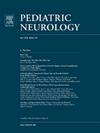Differentiating Pathology of Acute Disseminated Encephalomyelitis From Multiple Sclerosis in Children Using Diffusion Magnetic Resonance Biomarkers
IF 3.2
3区 医学
Q2 CLINICAL NEUROLOGY
引用次数: 0
Abstract
Background
To investigate the pathologic differences in patients with pediatric-onset multiple sclerosis (POMS) and acute disseminated encephalomyelitis (ADEM) using diffusion tensor imaging (DTI) and diffusion basis spectrum imaging (DBSI).
Methods
Fifteen children with POMS and eight children with ADEM underwent DTI and DBSI. The comparison of DTI and DBSI diffusivity measures of POMS (31 scans) and ADEM (17 scans) was performed as group comparison and association over time.
Results
In univariate analysis of average measures of DBSI and DTI over time, DBSI fractional anisotropy is lower in POMS than ADEM (P = 0.002), indicative of axonal injury of POMS. Higher DBSI fiber fraction (P = 0.046) and DBSI radial diffusivity (P = 0.016) but lower DBSI nonrestricted fraction (P = 0.005) in patients with POMS suggests higher axonal density, demyelination, and lower extra-axonal edema in POMS. However, there are no significant differences in DTI measures between POMS and ADEM over time.
Conclusion
DBSI may be useful to monitor and quantitatively compare coexisting axonal injury, demyelination, and inflammation in central nervous system white matter tracts in children with POMS and ADEM, overcoming the disadvantages of DTI. Larger prospective longitudinal studies are required to confirm these results.
弥散磁共振生物标志物鉴别儿童急性弥散性脑脊髓炎与多发性硬化症的病理。
背景:应用弥散张量成像(DTI)和弥散基谱成像(DBSI)研究小儿起病多发性硬化症(POMS)和急性弥散性脑脊髓炎(ADEM)患者的病理差异。方法:15例POMS患儿和8例ADEM患儿行DTI和DBSI。比较POMS(31次扫描)和ADEM(17次扫描)的DTI和DBSI扩散率测量作为组间比较和随时间的关联。结果:在DBSI和DTI随时间平均值的单因素分析中,POMS的DBSI分数各向异性低于ADEM (P = 0.002),表明POMS的轴突损伤。POMS患者DBSI纤维含量(P = 0.046)和DBSI径向扩散系数(P = 0.016)较高,而DBSI非限制性含量(P = 0.005)较低,提示POMS患者轴突密度较高,脱髓鞘和轴突外水肿较低。然而,随着时间的推移,POMS和ADEM之间的DTI测量没有显着差异。结论:DBSI可用于监测和定量比较POMS和ADEM患儿同时存在的轴突损伤、脱髓鞘和中枢神经系统白质束炎症,克服DTI的缺点。需要更大规模的前瞻性纵向研究来证实这些结果。
本文章由计算机程序翻译,如有差异,请以英文原文为准。
求助全文
约1分钟内获得全文
求助全文
来源期刊

Pediatric neurology
医学-临床神经学
CiteScore
4.80
自引率
2.60%
发文量
176
审稿时长
78 days
期刊介绍:
Pediatric Neurology publishes timely peer-reviewed clinical and research articles covering all aspects of the developing nervous system.
Pediatric Neurology features up-to-the-minute publication of the latest advances in the diagnosis, management, and treatment of pediatric neurologic disorders. The journal''s editor, E. Steve Roach, in conjunction with the team of Associate Editors, heads an internationally recognized editorial board, ensuring the most authoritative and extensive coverage of the field. Among the topics covered are: epilepsy, mitochondrial diseases, congenital malformations, chromosomopathies, peripheral neuropathies, perinatal and childhood stroke, cerebral palsy, as well as other diseases affecting the developing nervous system.
 求助内容:
求助内容: 应助结果提醒方式:
应助结果提醒方式:


